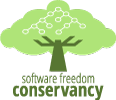Live-coding a beautiful, performant mobile app from scratch
Who is this presentation for?
- Software developers
Prerequisite knowledge
- A working knowledge of a modern object-oriented language
- Experience building user interfaces or web apps (useful but not required)
What you'll learn
- Explore Flutter, a new way to quickly build beautiful, custom, and performant native mobile apps
Description
Mobile app development has been a tough nut to crack for open source software. This is made worse by the trend toward highly customized user interfaces. Current practice for building top-tier mobile apps requires separate teams of programmers for each target platform, each using different languages, different frameworks, and different programming tools.
A group of engineers at Google, including people who worked on the Chrome browser renderer and the V8 JavaScript engine, wondered what they could achieve if they broke all the conventional rules about building user interfaces. They designed a new architecture that could do layout and rendering at 60 frames per second, built a reactive framework, put the entire framework in the user’s app so that everything is easily customizable, and built full sets of customizable widgets from scratch. The result: Flutter, Google’s mobile app SDK for crafting high-quality native interfaces on iOS and Android in record time.
Matt Sullivan and Emily Fortuna walk you through live-coding a Flutter app from scratch. You’ll learn how to design a UI using Flutter’s subsecond hot reload, pull in live data over a network, manage that data using streams, and even access some native code for those tricky platform-specific APIs. Flutter allows programmers and designers to experiment and play with their app’s user interface; new features can be added quickly and tested immediately; and the resulting app runs at 60 fps on both iOS and Android, while keeping the look and feel for each platform.

Matt Sullivan
Matt Sullivan is a developer advocate at Google, where he leads developer relations for Flutter. Previously, he worked on Android and Wear. He’s a bit of a language geek and is thoroughly enjoying adding Dart to his portfolio of languages to write cool things in. When he’s not hacking on Flutter, you’ll probably find him in the gym wearing far too many fitness sensors.

Emily Fortuna
Emily Fortuna is a developer advocate on the Flutter team at Google. When not hacking on compilers and evangelizing the awesomeness of Flutter, she can be found working on improving fairness in machine learning or acting on the stage and screen. She’s an avid member of the nerdy joke appreciation society.
Comments on this page are now closed.
Sponsorship Opportunities
For exhibition and sponsorship opportunities, email oscon@oreilly.com
Partner Opportunities
For information on trade opportunities with O'Reilly conferences, email partners@oreilly.com
Contact Us
View a complete list of OSCON contacts
©2018, O'Reilly Media, Inc. • (800) 889-8969 or (707) 827-7019 • Monday-Friday 7:30am-5pm PT • All trademarks and registered trademarks appearing on oreilly.com are the property of their respective owners. • confreg@oreilly.com





























Comments
Hi Balaji, that’s a good question — I don’t know of any comprehensive modern Dart books because the language has certainly changed over time. There’s the “Effective Dart” guide: https://www.dartlang.org/guides/language/effective-dart/style and the Flutter Udacity course as options to help learn Dart. What sort of resource are you looking for?
When we can expect a comprehensive book for Dart lang.